Description
This jigsaw puzzle is made with high-quality chipboard pieces and ships in a gift-ready box which also features the design for extra presentation points. Our jigsaw puzzles come in 3x sizes: 8″ x 10″ – (120 pieces), 11″ x 14″ – (252 pieces), 16″ x 20″ – (500 pieces).
Star Factory 30 Doradus (2012)
Several million young stars vie for attention in this Hubble Space Telescope image of a raucous stellar breeding ground in 30 Doradus, located in the heart of the Tarantula Nebula. Early astronomers nicknamed the nebula because its glowing filaments resemble spider legs.
30 Doradus is the brightest star-forming region visible in a neighboring galaxy and home to the most massive stars ever seen. Collectively, the stars in this image are millions of times more massive than our Sun. The image is roughly 650 light-years across and contains some rambunctious stars, from one of the fastest rotating stars to the speediest and most massive runaway star.
The image reveals the stages of star birth, from embryonic stars a few thousand years old still wrapped in cocoons of dark gas to behemoths that die young in supernova explosions. 30 Doradus is a star-forming factory, churning out stars at a furious pace over millions of years. Hubble shows star clusters of various ages, from about 2 million to about 25 million years old.
The region’s sparkling centerpiece is a giant, young star cluster (left of center) named NGC 2070, only 2 million years old. Its stellar inhabitants number roughly 500,000. Its dense core, known as R136, is packed with some of the heftiest stars found in the nearby universe, weighing more than 100 times the mass of our Sun.
The massive stars are carving deep cavities in the surrounding material by unleashing a torrent of ultraviolet light, which is etching away the enveloping hydrogen gas cloud in which the stars were born. When the radiation hits dense walls of gas, it creates shocks, which may be generating a new wave of star birth.
The composite image comprises one of the largest mosaics ever assembled from Hubble photos and includes observations taken by Hubble’s Wide Field Camera 3 and Advanced Camera for Surveys. The Hubble image is combined with ground-based data of the Tarantula Nebula, taken with the European Southern Observatory’s 2.2-meter telescope in La Silla, Chile. NASA and the Space Telescope Science Institute released the image to celebrate Hubble’s 22nd anniversary.
.: High-quality chipboard pieces with vibrant sublimated print
.: Packaged in a gift-ready paper box
.: Recommended for ages 9 years and older
| 20″ × 16″ (500 pcs) | 10″ × 8″ (120 pcs) | 14″ × 11″ (252 pcs) | |
|---|---|---|---|
| Width, in | 20.00 | 10.00 | 14.00 |
| Height, in | 16.00 | 8.00 | 11.00 |
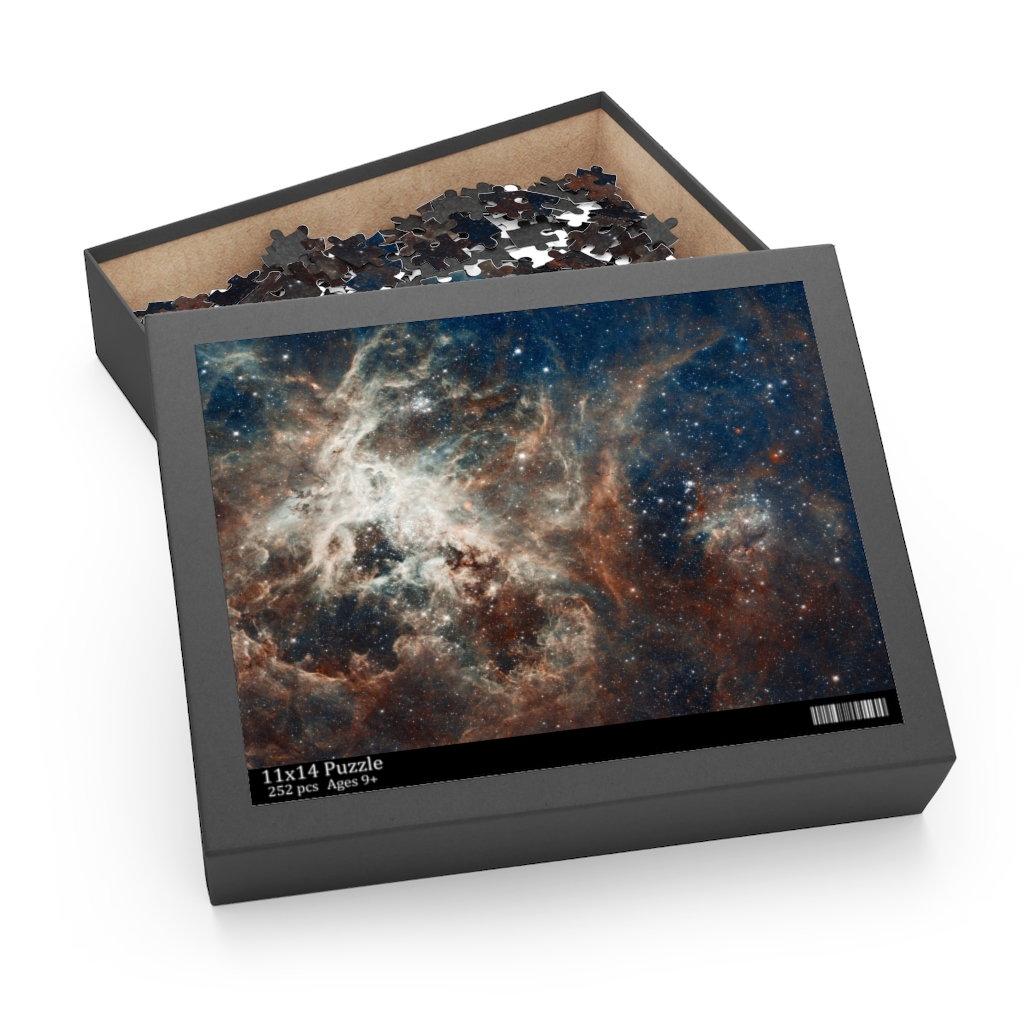
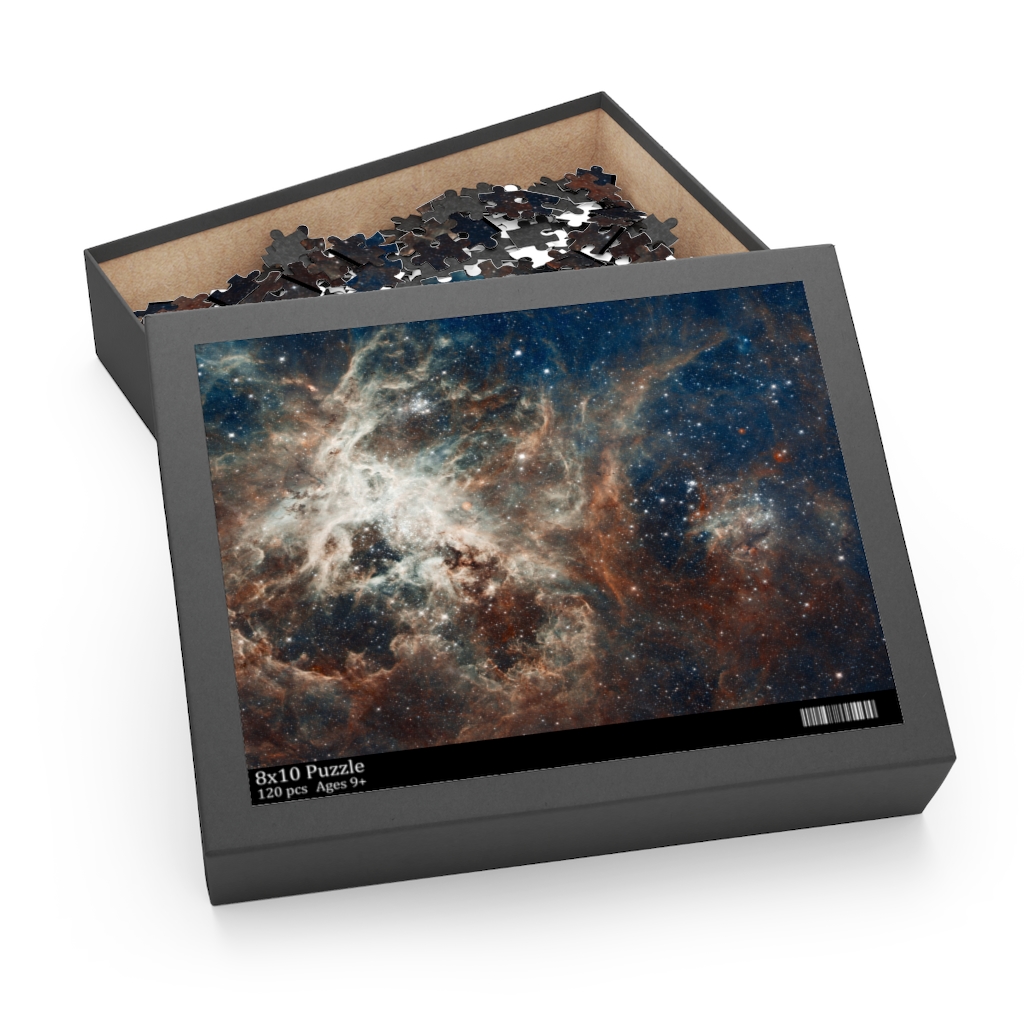
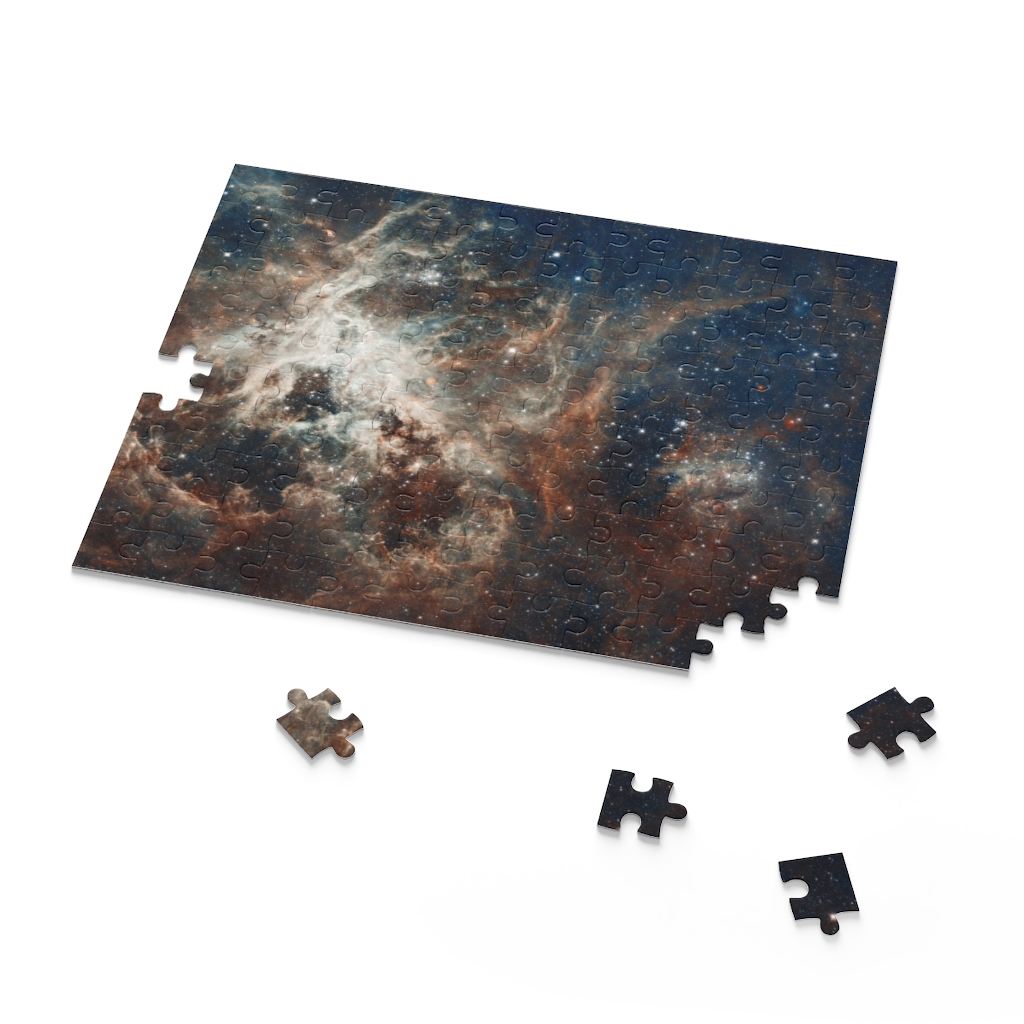

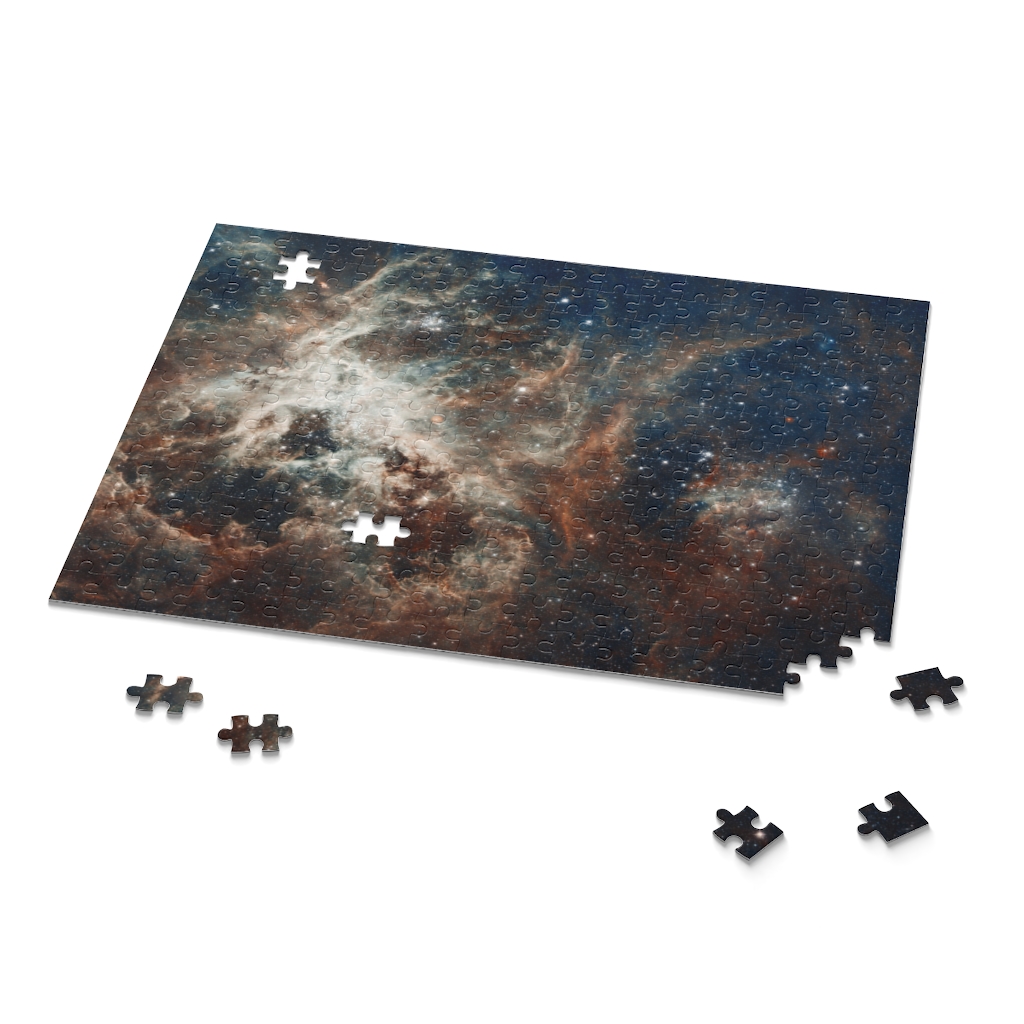


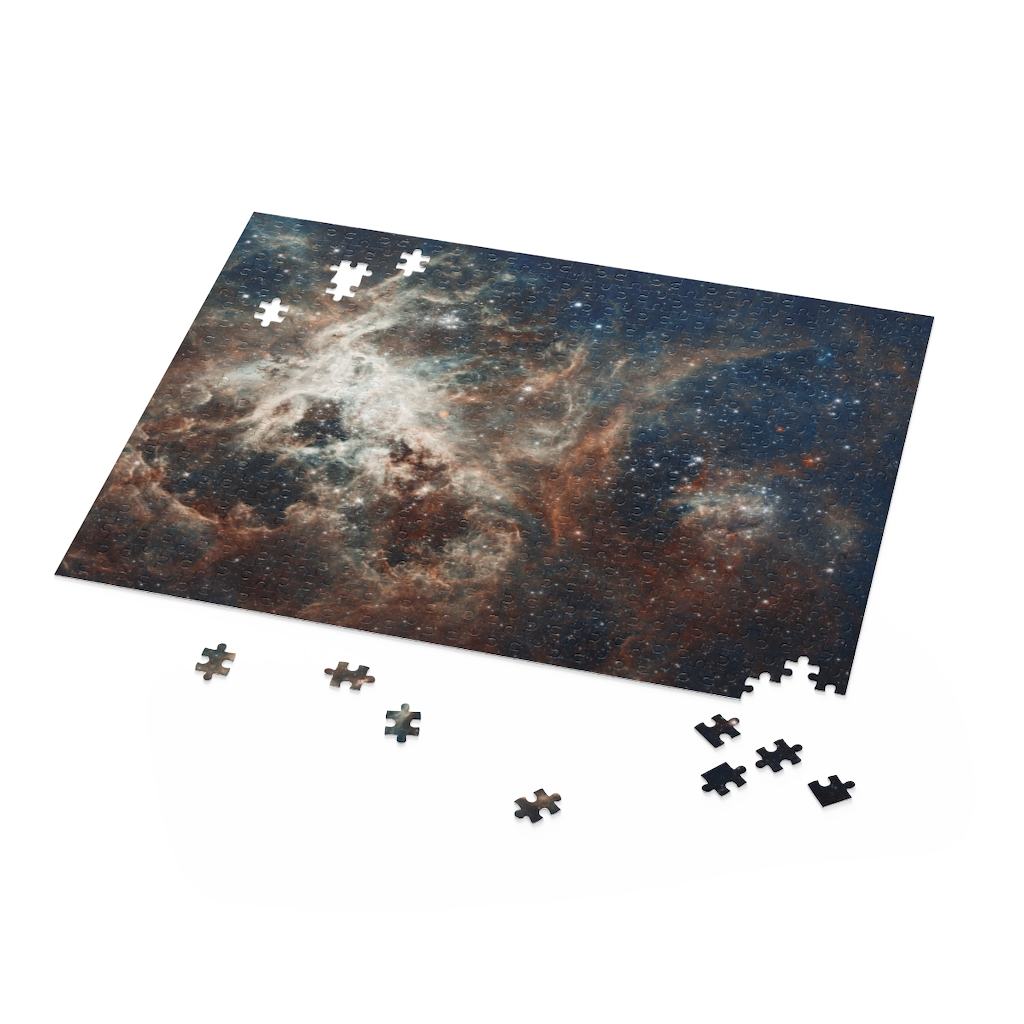



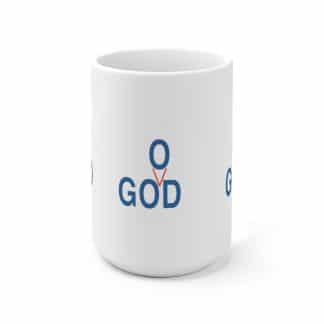
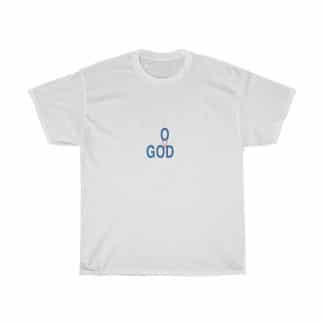

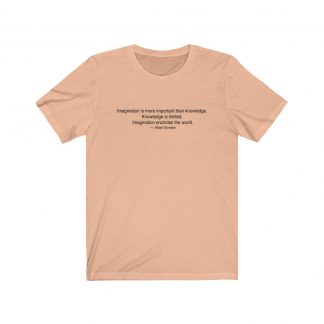

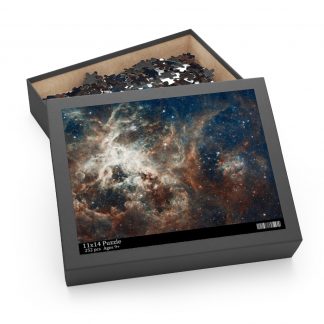
Reviews
There are no reviews yet.